Great-grandparents Koizumi Matajiro | Name Shinjiro Koizumi Siblings Kotaro Koizumi | |
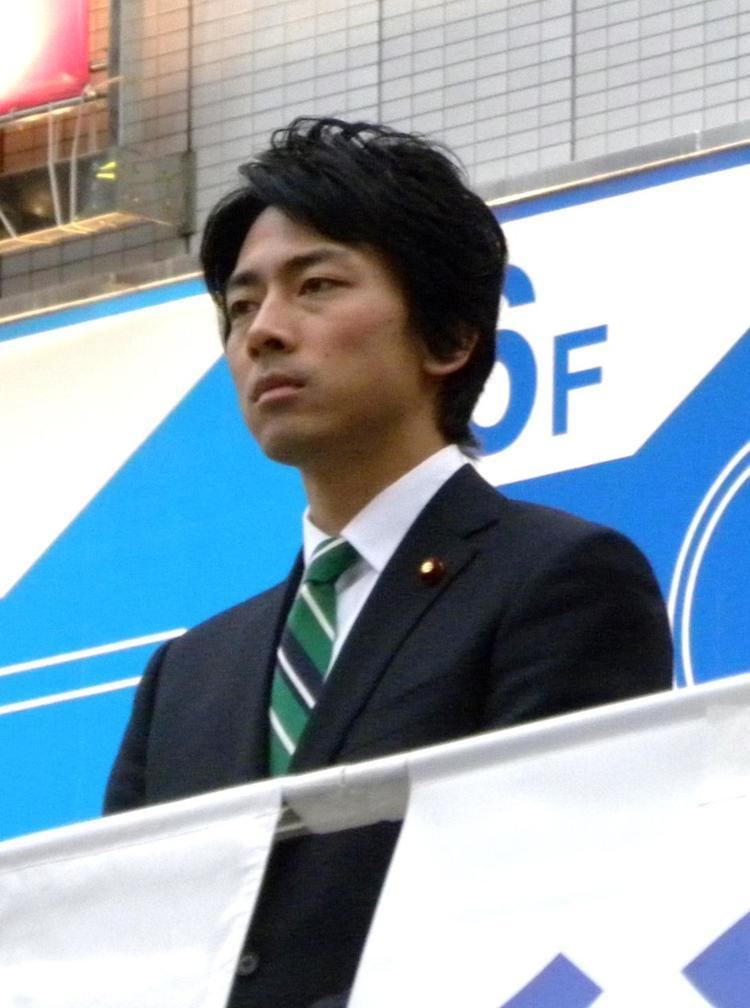 | ||
Born April 14, 1981 (age 42) Yokosuka, Kanagawa, Japan ( 1981-04-14 ) Alma mater Kanto Gakuin UniversityColumbia University Parents Kayoko Miyamoto, Junichiro Koizumi Grandparents Jun\'ya Koizumi, Yoshie Koizumi Similar People Profiles | ||
Interview with Mr Shinjiro Koizumi, Japan's Parliamentary Vice-Minister of Cabinet Office
Shinjirō Koizumi (小泉 進次郎, Koizumi Shinjirō, born April 14, 1981) is a Japanese politician, a member of the House of Representatives of the Liberal Democratic Party. He is the second son of 87th Japanese Prime Minister Junichirō Koizumi and younger brother of actor Kotaro Koizumi. He enjoys popularity among both the Japanese public and younger LDP lawmakers, and is often viewed as a future candidate for Prime Minister of Japan.
Contents
- Interview with Mr Shinjiro Koizumi Japans Parliamentary Vice Minister of Cabinet Office
- Early life
- Political career
- Views
- Popularity
- References
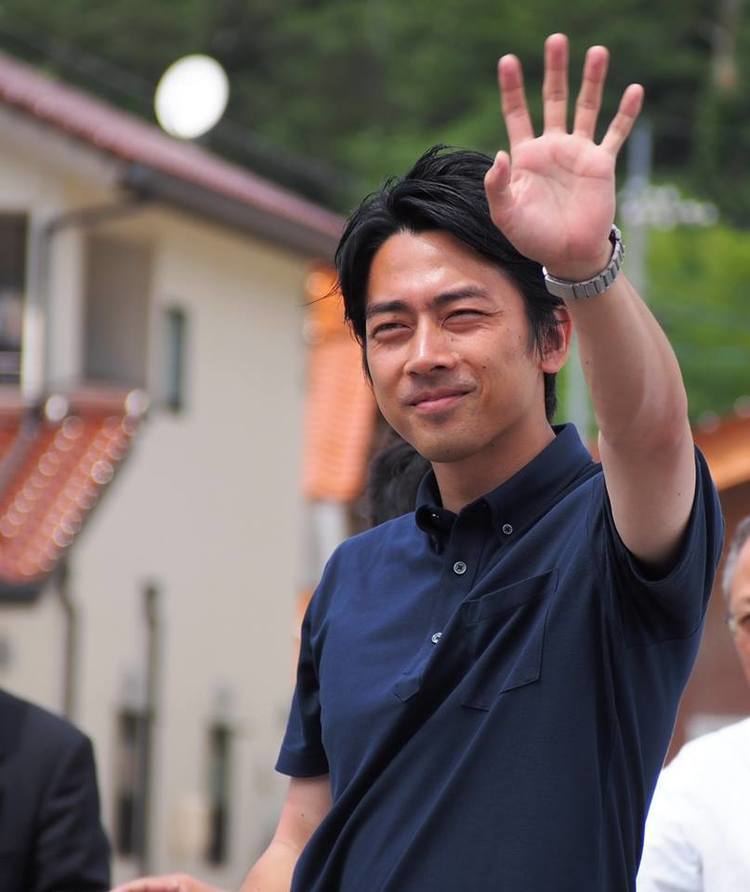
Early life
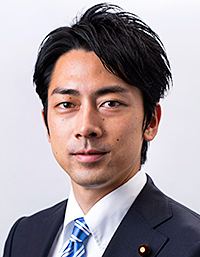
Koizumi grew up in Yokosuka, his father's home district, attending Kanto Gakuin University in Yokohama from elementary school through university with the Bachelor of Economics degree in 2014. When he was a student of junior high and senior high schools, he was engrossed in playing sports, especially baseball. He graduated with the M.A. degree in Political Science from Columbia University in 2006, where he was an understudy of Gerald Curtis. He spent one year as a part-time research fellow at the Center for Strategic and International Studies before returning to Japan in 2007. After that, he worked as a private secretary of Junichirō, his father.
Political career
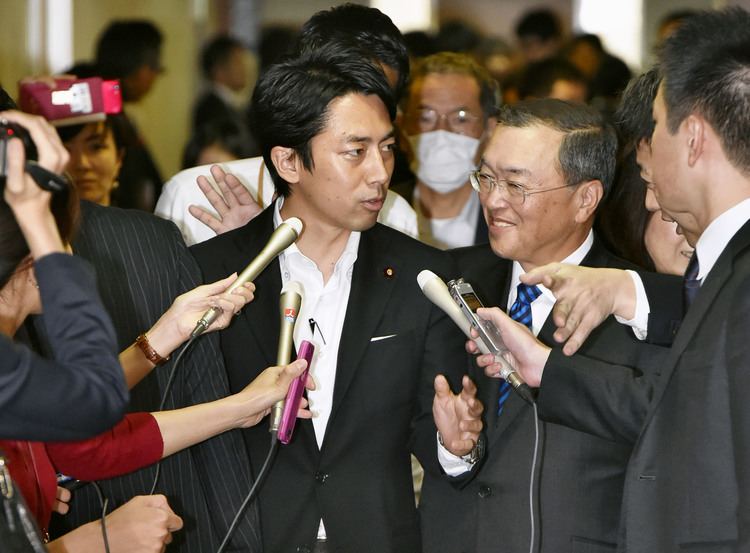
Following his father's announced retirement in 2008, he was elected to his father's former seat representing the Kanagawa 11th district in the August 2009 general election, in which many other LDP seats were lost to the Democratic Party of Japan. He campaigned in a rented Toyota Prius with a volunteer staff amid criticism of his status as a hereditary politician.

Koizumi became head of the LDP's young legislators caucus in October 2011, a post previously held by Prime Ministers Takeshita, Uno, Kaifu, Abe and Asō. In February 2012, he started a project called "Team 11," which sent members of the division to areas of the Tōhoku region affected by the 2011 Tōhoku earthquake and tsunami on the 11th of each month to talk to locals and report back on the state of the reconstruction efforts. The group had 82 members, all under the age of 45, as of March 2013. Some observers compared the group to the powerful "Machimura faction" led by Nobutaka Machimura in terms of its political weight.
He was critical of the LDP under party president Sadakazu Tanigaki. In his first meeting as a party officer, he stated that "the image of the party is that it doesn't listen to the opinions of young people, has old thoughts and a hard head. That is why trust will not be restored." He argued in a November 2011 speech that the party's stance on the controversial Trans-Pacific Partnership trade agreement needed to be clarified. He later advocated breaking up the LDP's agreement with the Democratic Party of Japan and Komeito to pass an overhaul of the social security and tax system, directly arguing to Tanigaki that the party's mission should be to take down the DPJ government and to restore LDP control, and drawing comparisons to his father's maverick reputation.
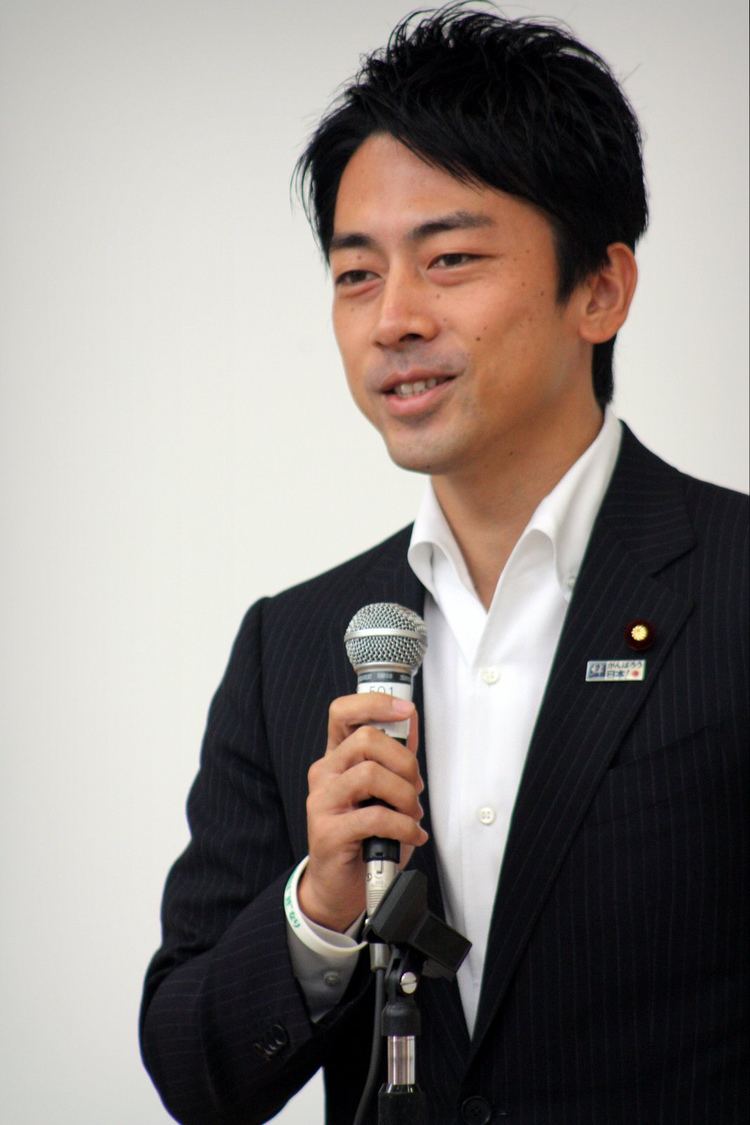
Koizumi broke ranks with the LDP in August 2012 as one of seven LDP legislators who refused to walk out of the no-confidence vote instigated by Ichiro Ozawa against Prime Minister Yoshihiko Noda, in which the LDP and NK had agreed to throw out their votes. Although Koizumi voted for the no-confidence resolution, it was ultimately voted down 246-86. He voted for Shigeru Ishiba against Shinzō Abe in the LDP leadership election of September 2012, but did not make his vote public until after the election in order to avoid influencing others' votes.
Koizumi was re-elected in the December 2012 general election, which restored LDP control of the government under Abe. In the subsequent House of Councillors election in July 2013, he focused his campaigning efforts on disaster zones, outlying islands and areas in rapid population decline, giving speeches in support of their local LDP candidates. Kenichi Tokoi, a nonfiction author who wrote a book about Koizumi, said that his goal was to shake as many individual hands as possible and to leave the impression that he was kind enough to visit them, something which he could not achieve by campaigning in big cities.
In October 2013, he was appointed Parliamentary Secretary in charge of Tohoku Recovery, in which capacity he would oversee post-disaster reconstruction efforts in Iwate Prefecture and Miyagi Prefecture. Ishiba, then secretary general of the LDP, stated that Koizumi "made a very strong case" with local disaster victims "about what he wanted to do and why." Tokoi characterized this posting as a test of Koizumi's administrative ability.
Views
Like his father, Koizumi visits Yasukuni Shrine on August 15, the anniversary of Japan's surrender in World War II. He visited in 2012 and again in 2013.
In a May 2013 interview with the Sankei Shimbun, he refused to comment on Osaka mayor Toru Hashimoto's controversial remarks on comfort women, characterizing the issue as one that should be discussed among experts and historians rather than politicians. He described the perceived nationalist shift in Japanese politics as "Chinese propaganda" and stated that the government needed to wage a better public relations campaign against it while focusing on the successful implementation of Abenomics. He also commented on the Japanese Constitution, stating that amendments were necessary but that there were more immediate problems to be solved: "I go to the disaster zones in Tohoku every month, and the constitution has not come up even once as an issue when I walk down the street there."
Koizumi was critical of the Abe government's decision to terminate a corporate tax surcharge intended to fund the Tohoku recovery, and views nuclear power as unsustainable in the long term, mirroring views that his father expressed in 2013.
Popularity
Koizumi had a 75.6% approval rating at the start of his stint as parliamentary secretary for Tohoku recovery. In a December 2013 TBS poll, he ranked second after Shinzo Abe as the most favored candidate for prime minister, although 57% of respondents responded that they had no particular favored candidate. He ranked third behind Abe and Shigeru Ishiba in a similar poll conducted by Jiji Press in June 2013, being chosen by 11.6% of respondents.
Following the December 2012 election, the National Diet Building gift shop began selling "Shinji-Rolls" (進次ろうる), souvenir green tea-flavored roll cakes branded with Koizumi's likeness. Shinji-Rolls became the gift shop's second most popular item in 2013, outselling souvenirs branded with the likenesses of LDP leaders Shigeru Ishiba and Taro Aso, and outsold only by manju bearing the likeness of Shinzo Abe.
